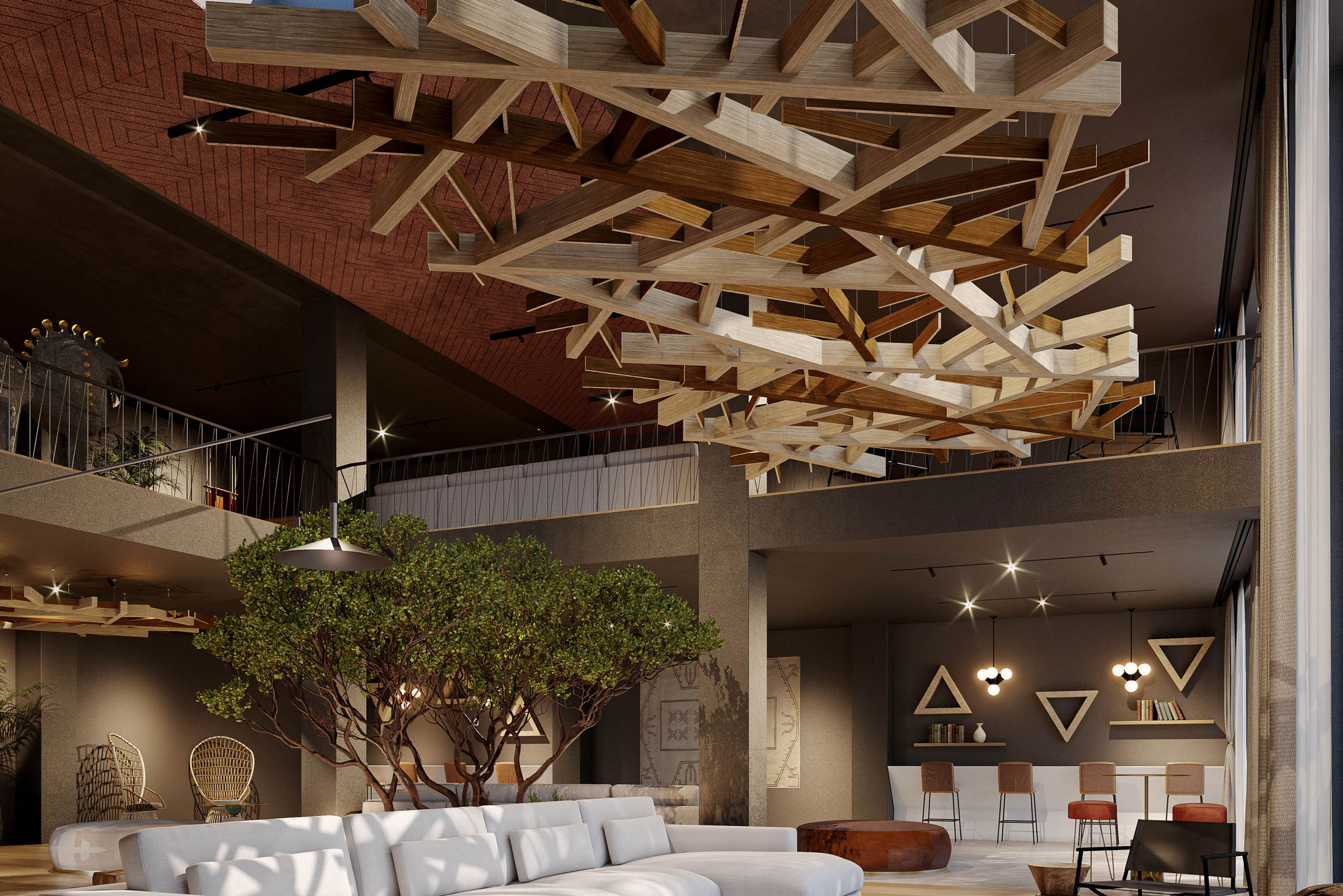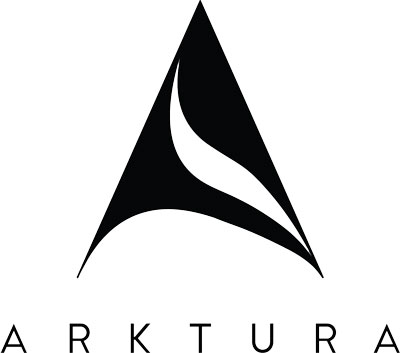Story at a glance:
- Advanced computational programs can improve work in the built environment.
- Arktura shares a guide to understanding the basics of AI design.
Artificial intelligence (AI) has quickly gone from futuristic science fiction premise to part of our daily lives—seemingly overnight. Just when the public got used to the idea of having a virtual assistant on our smartphones that could help make calls, remember appointments, and choose music, AI became part of our daily work lives.
Today AI art is being made by inputting creative prompts into programs like Midjourney, while fully written blogs and articles are being generated with the likes of ChatGPT from a simple thesis statement. Corporate email clients are even jumping on the AI trend, incorporating tools to help you write the perfect email response. The use of advanced computational programs as part of the built environment is here.
At Arktura we constantly evaluate new technologies to assist our multidisciplinary team, merging these with design and manufacturing expertise to fuel innovation for clients. As AI text-to-image generators mature, they may be poised to become a dynamic contributor to the creative process, generating numerous design options in a matter of moments.
This ability to create images out of a written prompt, both simple and complex, opens a plethora of design possibilities. What used to take designers and artists hours can be generated in a fraction of that time. To understand the full potential of these programs, let’s examine some basics of AI design.
What are AI Text to Image Generators?
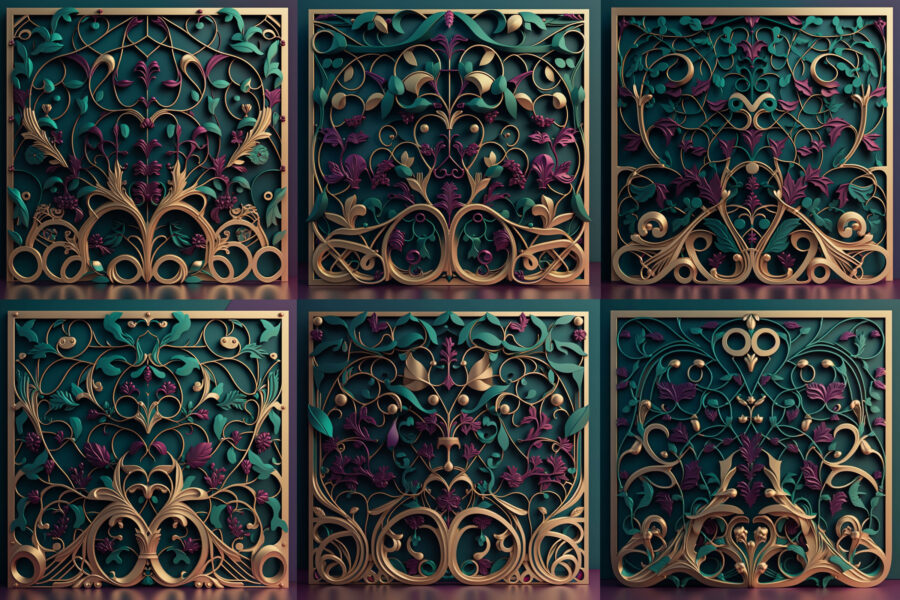
An AI to text generator was used to produce multiple variations of wall panels inspired by nature. Image courtesy of Arktura
AI text to image generators are deep learning models that can generate images from textual descriptions using computer vision techniques. These models are typically trained on large datasets of text-image pairs, allowing them to learn to associate textual descriptions with visual features in images.
This type includes some popular AI text-to-image generators you may have already heard of like DALL-E, Midjourney, CLIP, and StyleGAN. Ultimately AI text-to-image generators have the potential to revolutionize the design industry by allowing everyone to create realistic, high-quality images quickly and efficiently.
How Do AI Text to Image Generators Work?
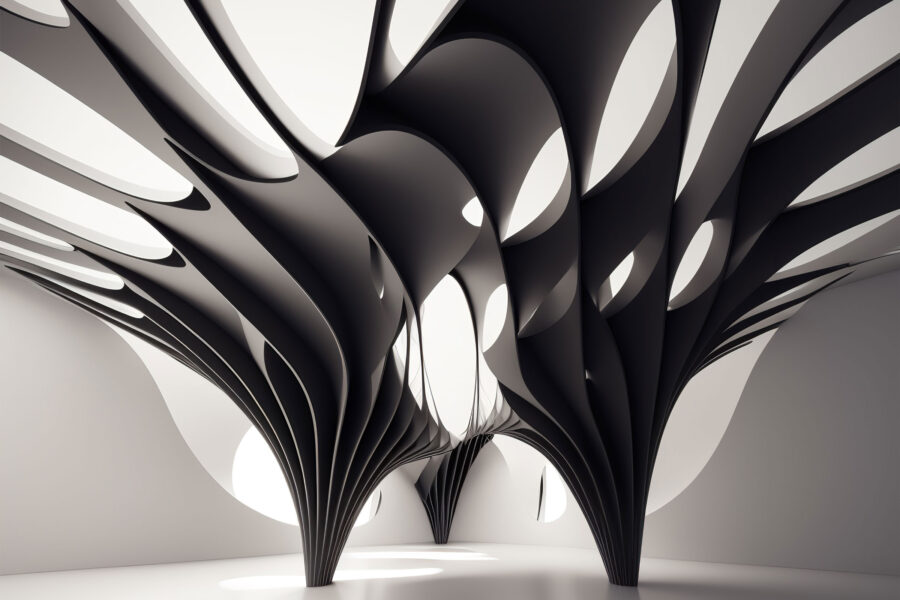
Blending the lines between natural and abstract formations, this AI generated image features a concept design for custom sculptures. Image courtesy of Arktura
AI text to image generators typically use deep learning techniques to create images from text descriptions. These techniques can include natural language processing (NLP), computer vision, and generative adversarial networks (GANs).
This starts with the input of a textual description, encoded into a numerical representation using an NLP model. This numerical representation is then fed into a GAN model, which generates an image that matches the textual description. The GAN model typically consists of two parts: a generator and a discriminator.
The generator takes the numerical representation of the text as input and produces an image. The discriminator then evaluates the generated image and compares it to a dataset of real images.
The discriminator provides feedback to the generator, instructing it how to improve the quality of the generated image. This feedback loop continues until the generated image is realistic to human standards and matches the textual description. The process of creating images from text is complex and requires the integration of multiple deep learning techniques. However, the result can be impressive, with models able to create high-quality, photorealistic images from simple textual descriptions.
What Makes a Good Prompt?
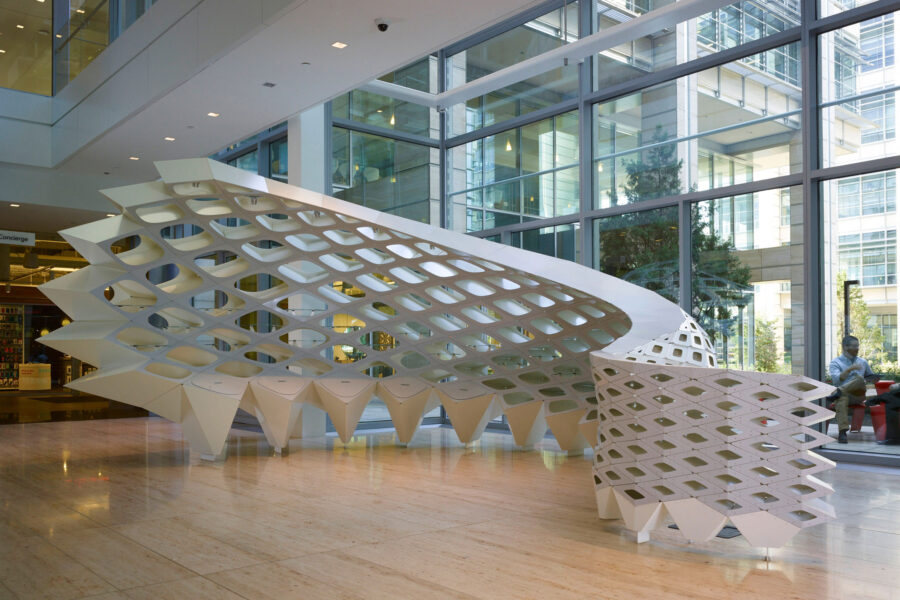
This large-scale custom project at Exxon in Houston, designed by Gensler, came from the collaboration of Arktura’s Solutions Studio team along with the architects and clients. Photo courtesy of Arktura
As with any user-generated output, the work by AI is heavily influenced by its initial prompt. No matter what service or program you are using, it’s paramount to start off with the right input prompt.
Producing a good prompt for AI text-to-image generators involves providing clear and detailed instructions that describe the desired image, but what does a good prompt entail?
These are some tips to create a good prompt:
Specificity is key. The machine only comprehends as much as we feed into it. To attain a highly definitive visual result, provide specific details about the image you want the AI to generate. For example, if you want an image of a person, include details like age, gender, hair color, and clothing style.
Use adjectives. Descriptive adjectives help the AI understand the style or mood of the image. For example, use words like “vibrant,” “dark,” or “surreal” to describe the image.
Avoid ambiguity. Avoid using ambiguous language or phrases that could confuse the AI. Always use clear and direct language to describe the image you want.
Provide examples. Providing examples of images that match the desired style or mood can help the AI understand what you are looking for. For example: “Baroque style” could already refer to ornate or elaborate designs.
Be concise. Keep the prompt concise and to the point. Avoid providing unnecessary details or information that may distract or confuse the AI.
Like with any tool, AI text to image generators require refinement and editing. This may mean that you will edit and re-write a prompt a few times before getting the result that you want. It is the responsibility of the designer to utilize the tool while building on the information given to us by the machine. It is not a “one and done” process, but a tool to spark inspiration.
Bringing AI to the World of Design and Architecture
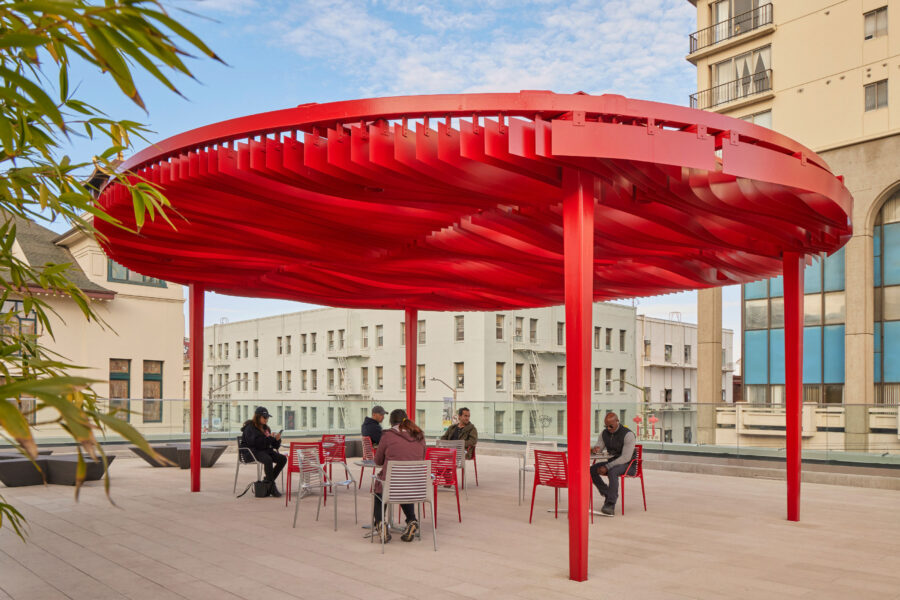
This transportation hub project features a custom sun shelter designed crafted by Arktura’s Solutions Studio team for Chinatown Central Station in San Francisco, designed by RHAA Studio. Photo by Caitlin Atkinson
With the dawning of this new age of AI, advanced computational tools are now in the hands of just about everyone. Applying them to the built environment offers a range of tools and techniques that can help designers and architects create more efficient and innovative solutions. AI can be used in design and architecture through:
Generative design. AI algorithms can analyze large amounts of data and generate a vast number of design options that meet specific requirements. Helping architects and designers quickly explore a wide range of design possibilities and identify the most optimal solutions.
Image and text recognition. Analyze images and text to identify patterns, shapes, and other important design features. It can assist designers to better understand client needs and preferences and create designs that align with those needs.
Virtual and augmented reality. Creating immersive virtual and augmented reality experiences that allow architects and designers to visualize and test designs in a realistic way. Seeing projects in this space helps to identify potential issues even before the prototype stage.
AI has the potential to significantly improve the design and architecture industry by enabling designers and architects to work more efficiently, explore more design options, and create more sustainable solutions.
The Effects of AI in the Built Environment
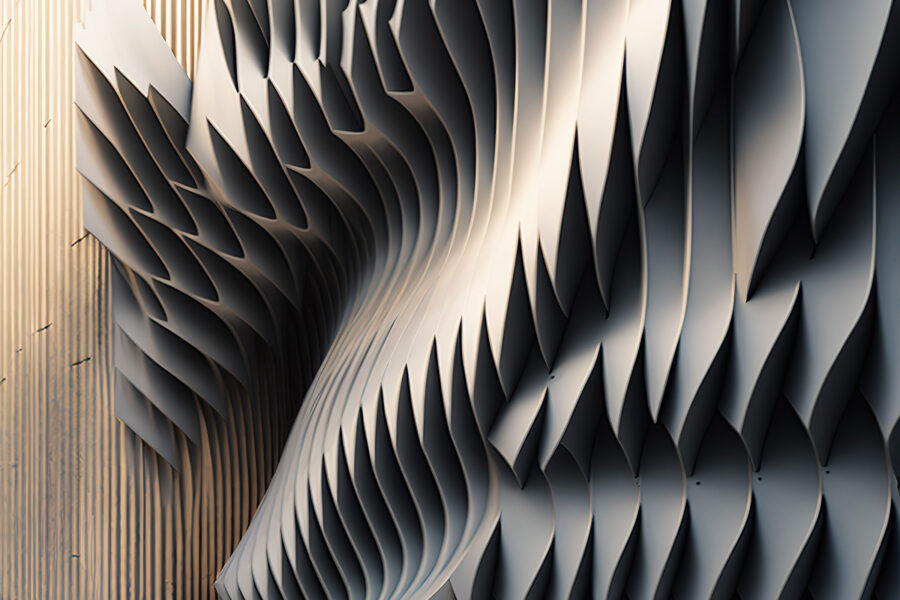
From computer generated to reality, this computer generated concept image showcases an AI interpretation of a wall mounted acoustic systems. Image courtesy of Arktura
We already know AI text-to-image generators have a great potential to create multiple variations of designs quickly and efficiently. A simple, yet concise text description can produce a wide range of images that match the descriptions. This quick turnaround is useful as designers often need to explore multiple design options before selecting the finalized outcome.
With the right input an architect could enter a range of design requirements, such as the number of rooms, the desired layout, and the style of the building, and the AI generator could produce multiple designs that meet those requirements. These designs could then be further refined or combined to create the best possible solution that meets the client’s needs.
Going Beyond a Designer’s Limitations
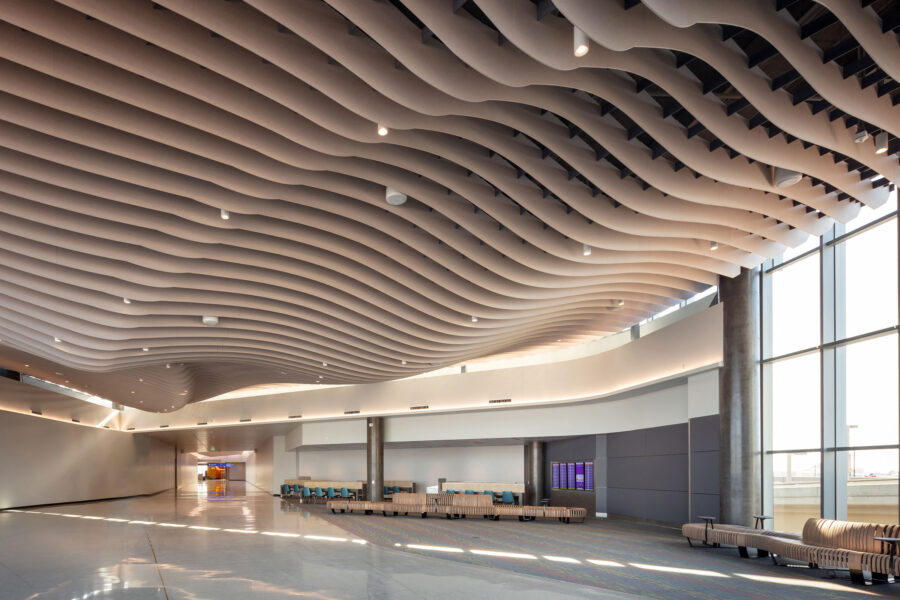
Inspired by the local desert landscape, Arktura’s Solutions Studio team worked in tandem with the architects and designers to create this stunning custom ceiling system for Phoenix Sky Harbor in Phoenix, designed by Corgan. Photo by Kurt Griesbach
AI text-to-image generators can also produce designs that are not limited by the designer’s creativity or experience. The program can generate unique and innovative designs that may not have been initially considered by the designer. This leads to new and exciting design possibilities that can enhance the overall quality of the project.
Furthermore, AI image generators could impact the design industry through:
Increased efficiency. AI image generators can produce images much faster than human designers or artists, reducing the time and effort required for image creation.
Cost savings. Reduce the cost of image creation with AI, making design services more affordable for clients. This can lead to increased demand for design services.
Customization and innovation. Effortlessly create customized images based on specific inputs like textual descriptions or user preferences by combining different styles, features, and patterns.
Democratization of design. Just about anyone can create a custom design. This can democratize access to creative tools and enable people with limited resources or skills to create images and visual content creating new opportunities for underrepresented groups.
Potential Limitations as of 2023
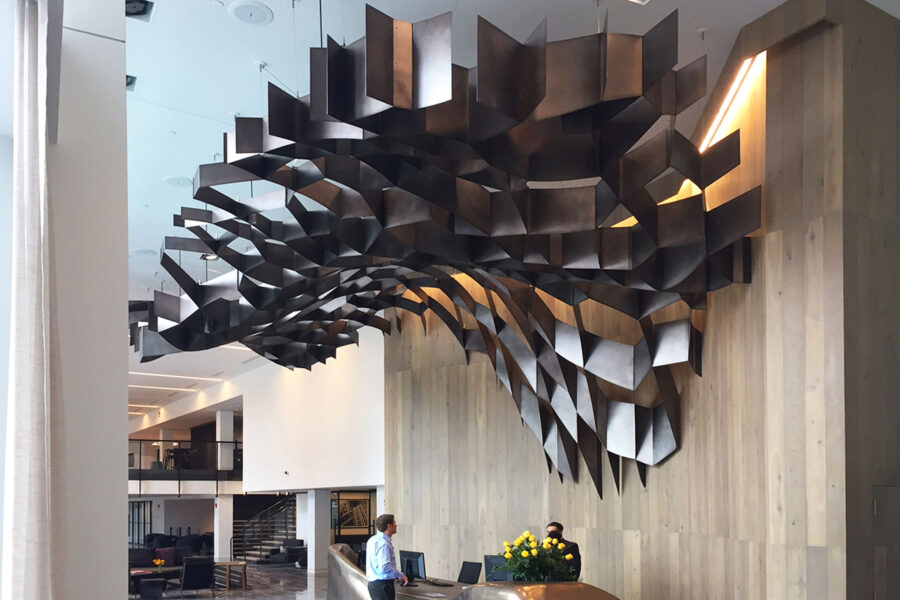
Cutting-edge technology combined with top creative minds creates show stopping custom creations like this one from Arktura’s Solutions Studio team for a CBT Architects project. Photo courtesy of Arktura
While everything described makes it seem like the AI revolution is here to automate our entire lives, there are quite a few limitations. This is an early technology that is continuing to make great progress. Potential setbacks from months ago when you may have first heard of these tools may have already been updated and patched. AI image generators have made significant progress in recent years and have the potential to revolutionize various industries. However, they also have some limitations, like:
Data bias. AI image generators are only as good as the data they are trained on, which can lead to bias in the generated images. This can perpetuate existing stereotypes and inequalities.
Lack of originality. AI image generators are designed to produce images that match specific styles or features from existing datasets. This can limit their ability to create truly original or groundbreaking images.
Lack of control. AI image generators are not always predictable, and it can be challenging to control the specific features or styles of the generated images.
Machine learning has advanced dramatically throughout the last few years. Even AI image generators like Midjourney have come a long way within the last few months. Like with all machine learning, this is essentially due to time and usage. The more we use these tools, the greater their ability to decipher and produce images. And it will only get stronger with time, potentially needing less details from the human user to produce the same results that were once described with detail.
The Dawn of AI at Arktura
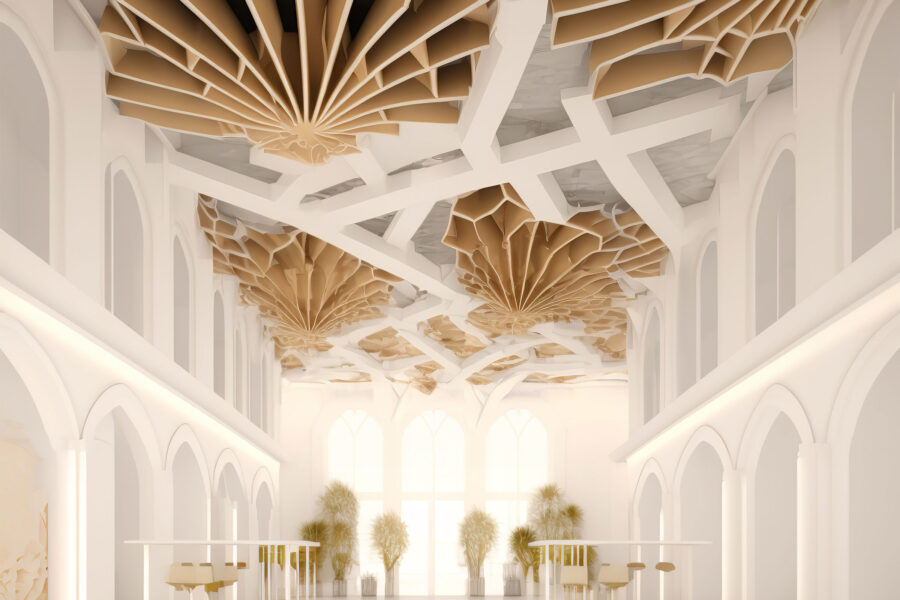
This design features an AI text to image generated rendition of Arktura’s existing Arborisa ceiling cloud system. Image courtesy of Arktura
AI image generators can become an additional tool to the design workflow. These are not programs designed to replace our team; instead it’s crucial to view tools as part of our design arsenal.
Within Arktura’s custom design team at Solution Studio, we work with architects and designers to create a visual representation of their mind’s creative vision. Through a fully collaborative process between our design team and the clients, we can fully bring a design vision to reality. Thanks to a combination of skilled designers, custom coding, program scripting, and proprietary technology, we execute dynamic, custom designs for the built environment.
Throughout the process we listen to what our clients want and need to figure out a way to bring that vision to life. At times clients may have an idea of what they want, without any image representation to clearly describe their needs. This is where AI text to image generators can play a significant role in reducing workflow and increasing the overall impact of the design. At Arktura and especially within Solutions Studio, we are no stranger to innovation. We embrace leading computational and manufacturing technologies to consistently open doors to new ways of working.
Bringing the Future of Design Tools to the Masses

Inspired by the natural formation of tree canopies, Arborisa features a biophilic inspired design that provides acoustic coverage to those below. Rendering courtesy of Arktura
Product development and research are ongoing and invaluable instruments at Arktura. It is here where we produce iterations and test new patterns for ceiling fixtures and wall panels.
A recent addition to Arktura’s product line is Arborisa—biophilic inspired modules that provide atmospheric and acoustic properties to any space. What if we used AI text to image generators to add to this product line in the future? What would these new machine assisted pattern designs look like?
The future of AI design may be hard to pinpoint, but what is clear is that AI is here to stay, and the sooner we embrace it, the sooner we can push it to the limits of design possibilities.

